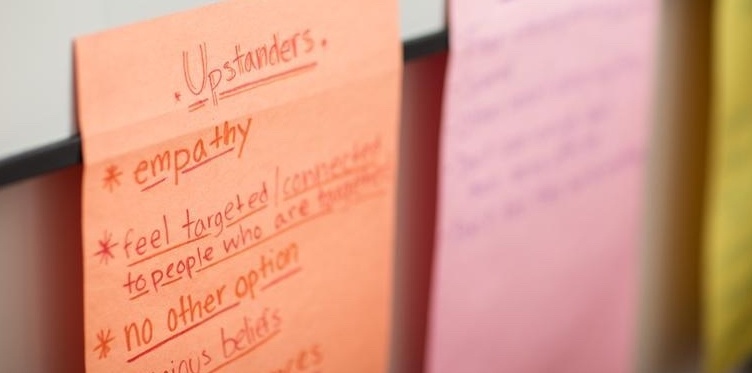
Earlier in May two men were killed in Portland, Oregon for intervening when a man began screaming xenophobic insults at two young women on a train. I found myself admiring their bravery to act without hesitation but I also felt an overwhelming sense of worry for the students and teachers I work with at Facing History. We introduce them to the theme of “choosing to participate” and to the term, “upstander,” an individual who takes action in the face of injustice. But the deaths of the upstanders in Portland were a stark reminder that such acts can carry great risk. How then, as educators, do we reconcile both calling young people to be upstanders and also not wanting to recklessly expose them to violence?
Recognize that Choosing to Participate is Vast and Complex
"Choosing to participate" is more complex than just spurring students to action and is not a call for people to unnecessarily put themselves at risk. It is about developing a mindset of participation, about teaching our young people, as Courtney Martin writes, to be “moral citizens” rather than “moral sleepwalkers.” It is about developing the values of upstanding: compassion, kindness, and empathy. Students need not wait until acts of violence occur to intervene; by complicating students’ understanding of what it means to participate and be an upstander, we help them to resist racism and bigotry by proactively promoting values of inclusion and respect.
Help Develop a Critical Lens
With an increase in identity-related hate crimes throughout the United States, it’s important for students to recognize the shared humanity of their peers and others in their communities. Guide your students to consider the power of the language they consume and use themselves. Help them develop a critical lens as they engage in a digital world. This allows them to recognize the value of intervening in the face of casually intolerant language that has the potential to lead to violence.
For example, a student group in California led a campaign through their Facing History class to call attention to the use of the term “illegal” to describe immigrants. By starting a school-wide conversation about how immigrants are perceived in their town, they opened up a space to create a more tolerant and compassionate community through the use of more humanizing language. Paying attention and exercising greater awareness about ourselves and others are crucial first steps to preventing the kind of violence that took the lives of the two upstanders in Portland.
Reflect On the Choices We Have in Moments of Upstanding
Help students reflect and think critically about the choices they have in moments that call for upstanding. The challenge of this, too, is that there will continue to be moments that call for action, which also put us at risk. What may seem like “small” moments—of stepping in and saying the right thing—can quickly and surprisingly become a “big” moment, one of great danger. In Portland, there turned out to be much more at stake than anyone likely realized. Rebecca Solnit writes, “We speak of self-fulfilling prophesies, but any belief that is acted on makes the world in its image.” By stepping in at a moment of need, the men in Portland were acting to make the world a bit more in the image they saw: one of tolerance, inclusivity, and love. They were standing against the hatred, bigotry, and intolerance that their attacker was spewing.
As teachers, we can help our students to identify ways to act on the values of upstanding proactively and to recognize their strength and agency as they come together to stand against intolerance and hate. There may come a day when one of our students is called upon to be an upstander in a moment that carries with it great danger. It is my hope that by developing a mindset of participation in our young people, we are moving closer to a more humane and just world in which those moments are fewer and fewer.
Want to discuss being an upstander with your students? Check out our page with resources on upstanders from history and examples of upstanders from Facing History classrooms.


